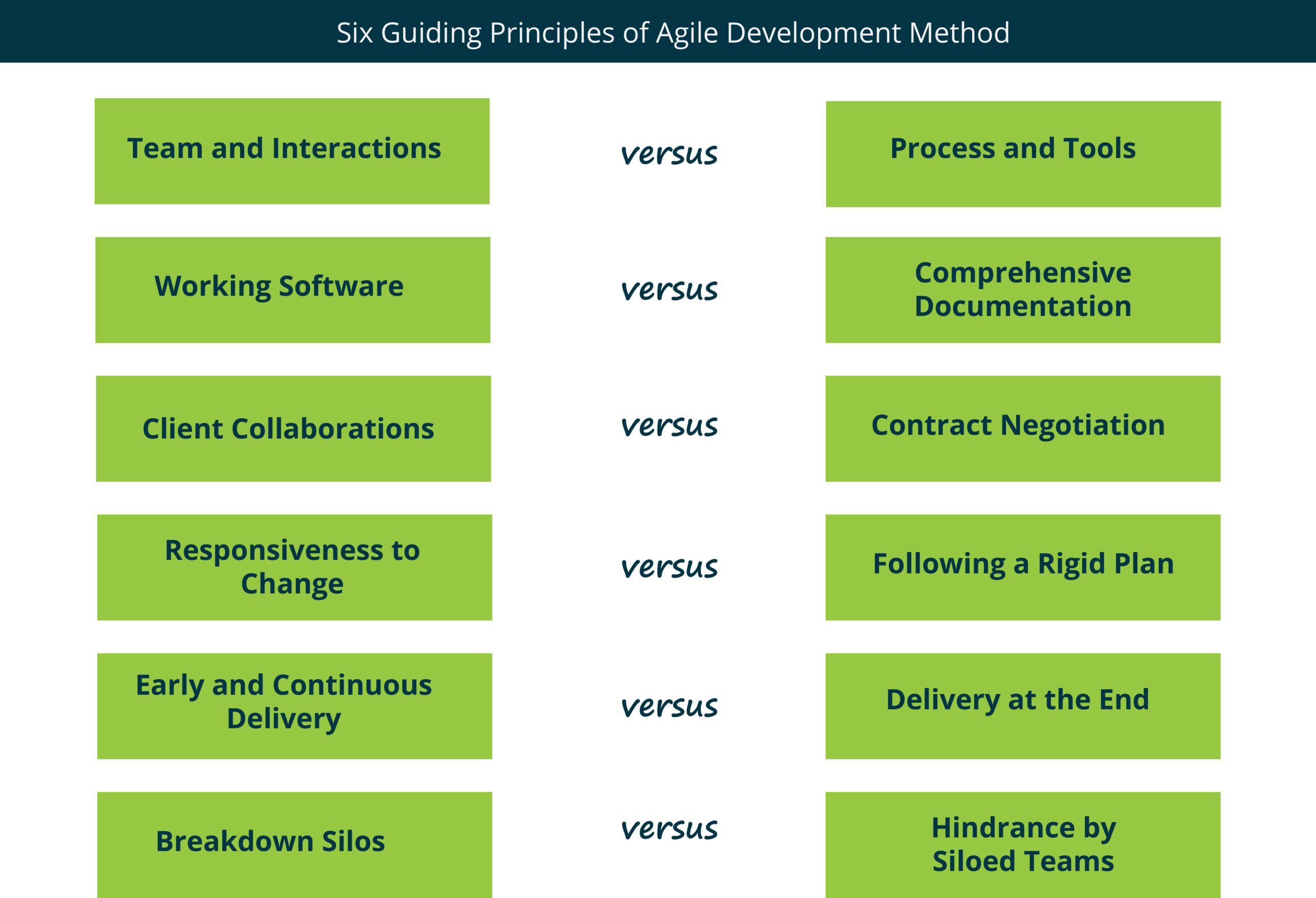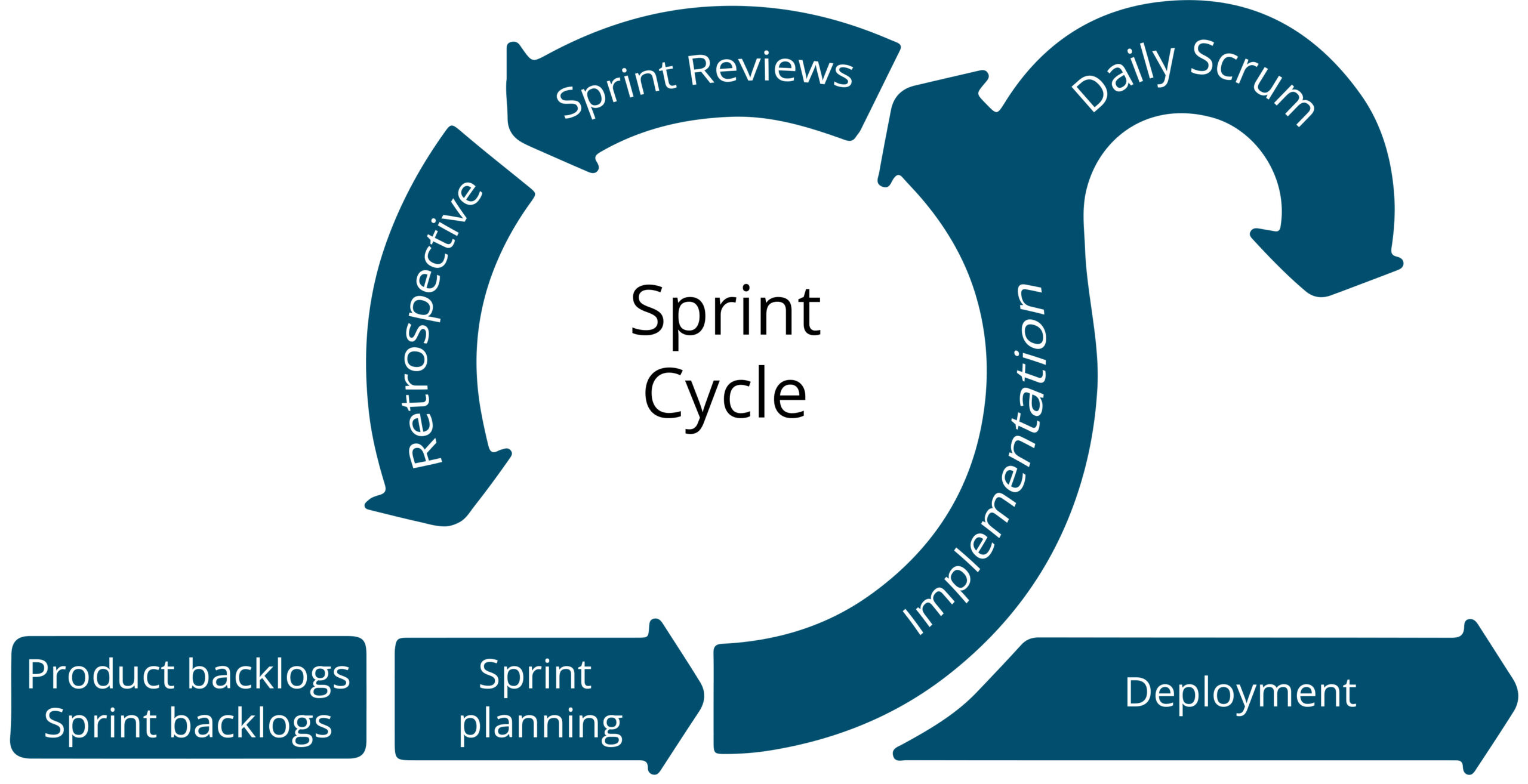Getting Started With Agile Scrum Methodology

Agile Scrum has increasingly become the go-to method for Information Technology (IT) projects. Recognized for delivering the most significant amount of value in the shortest time, it’s no wonder why the Agile Scrum methodology has expanded to automotive, construction, education, financial, healthcare, and product development. With concrete planning, definitive deadlines, detailed deliveries, and high dependence on feedback, at its core, it’s safe to declare that Agile Scrum is here to stay.
What Is The Agile Methodology
The agile methodology abandons cumbersome software approaches that take months and, in some cases, years to deliver a final product. Agile methods rely on a Project Manager’s ability to communicate effectively, facilitate cross-functional teams, and coordinate activities. In this method, analysis, requirements, design, and testing are continually monitored, led by user feedback, and contained within an iterative cycle. Iterations progress agile projects through consecutive refinement.
The agile development method has six (6) guiding principles that make design and execution simple. This principles include:

In an agile methodology environment, technical quality and the proper design are essential for enhanced agility.
What Is The Scrum Framework
Scrum is the most widely adopted framework within agile development. The scrum framework provides additional project transparency, improves team accountability, easily accommodates changes, and increases project savings. This framework divides projects into manageable tasks for completion in short intervals, allowing development teams to deliver high-quality results each time. The scrum framework focuses on self-organization, collaboration, value-based prioritization, and sprint cycles.
Each sprint cycle identifies the specific tasks, assignments, milestones, or deliverables and deadlines for each iteration.
Sprint cycles last from one (1) to four (4) weeks and feature the following:
- Sprint planning
- Daily scrums
- Sprint reviews
- Sprint retrospective
- Product backlogs
- Sprint backlogs
- Sprint burndown chart
The scrum framework applying agile principles enables project teams to produce the best results consistently.

Agile Scrum Methodology Implementation
The implementation of agile and Scrum (Agile Scrum) offers quick starts to projects, flexibility and accelerates product-to-market timeframes. As organizations strive to maintain competitiveness, the Agile Scrum methodology allows technology professionals to innovate while improving visibility into project development progress. Additionally, Agile Scrum implementation requires active client involvement, ultimately building trust.
Roles In Agile Scrum Implementation
These roles play an integral part in implementing an effective Agile Scrum methodology.
- Advise on teaming strategies
- Coach teams for optimal performance
- Manage team resources and project risks
- Project champion to maximize engagement and contributions
Agile Scrum Master
- Owns the project process and adjusts as necessary
- Facilities ceremonies (processes) in the development
- Responsible for upholding Agile Scrum values, principles, and practices
- Enables team productivity and cooperation across a development team
Certified Scrum Product Owner
- Decision-maker on scope, schedule, and achieving financial goals
- Defines products features
- Adjusts and prioritizes features
- Offers feedback every sprint
Development Team (Small team no more than seven (7) people)
- Business Analysts
- Data Scientists
- Programmers
- Testers

Agile Scrum implementation encourages a continuous product improvement cycle incorporating real-time user feedback. For organizations of all sizes struggling to maintain competitiveness with traditional development, Agile Scrum is a practical solution.
To learn more about the Agile Scrum Methodology, visit www.digitalworkshopcenter.com or speak with a Student Advisor today to enroll in our Agile & Scrum Essentials Workshop.
